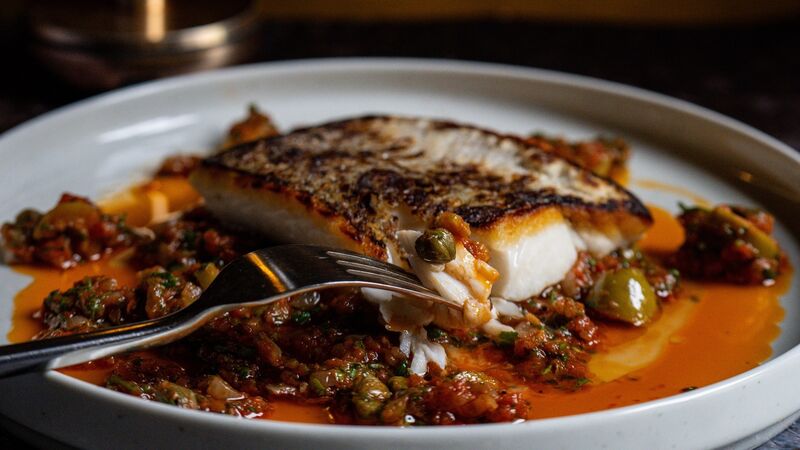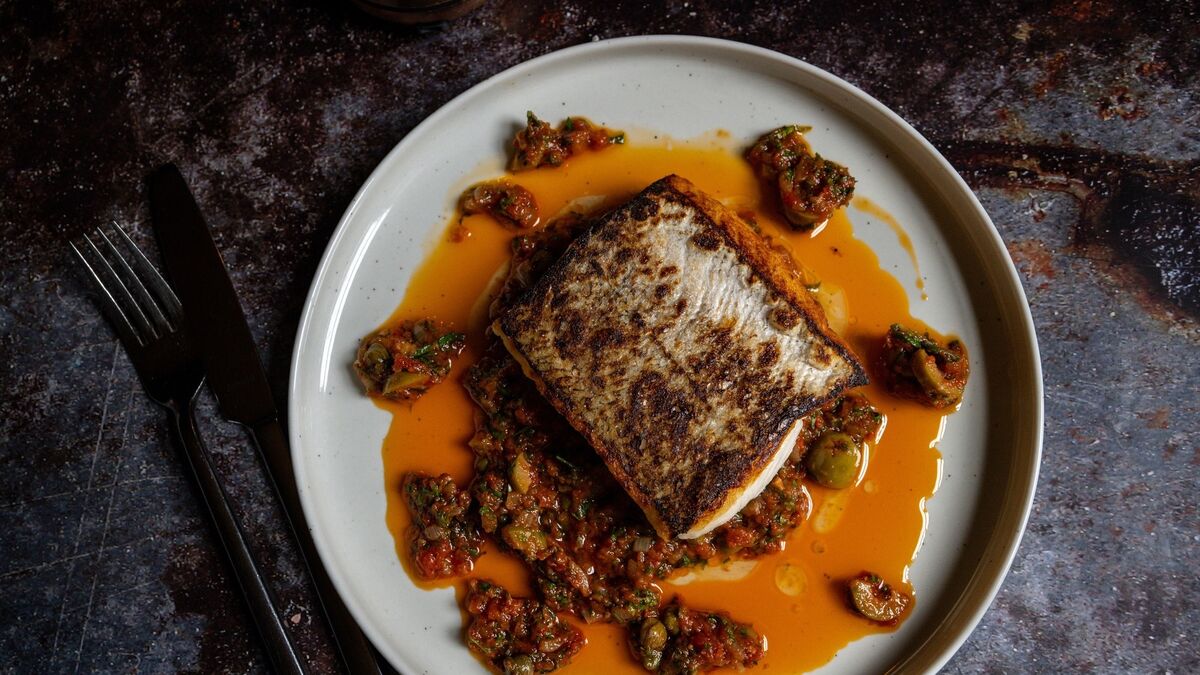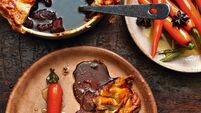Seafood Made Simple: An easy and satisfying hake fish recipe

I love a condiment-heavy sauce, it’s great for clearing out the collection of jars at the top of the fridge. Picture: Chani Anderson
This weekend’s recipe of hake with Provençal sauce is simple and satisfying.
Hake with Provençal Sauce
The list of ingredients in my version might seem rather long, but trust that each inclusion earns its place.

Servings
4Course
MainIngredients
For the hake
4 x 110g fillets of hake
2 tbsp rapeseed oil
Fine salt
1 lemon
For the Provencal sauce
4 tbsp golden rapeseed oil
1 shallot, finely diced
½ a bulb fennel, finely diced
3 cloves garlic, minced
1 bay leaf
1 tsp dried oregano
2 sprigs of rosemary, chopped
75ml white wine
1 x 400g tin chopped tomato
1 tsp caster sugar
2 tbsp capers
2 tbsp green olives, chopped
Sea salt
Freshly cracked black pepper
1 bunch chervil, finely chopped
Method
Remove the hake from the fridge 15 minutes before you intend on cooking.
To make the sauce, choose a medium-sized heavy-based saucepan and warm the golden rapeseed oil on medium-low heat.
Add the shallot, fennel and minced garlic, season with salt and pepper. Sweat until translucent. Add the bay leaf, oregano, chopped rosemary and cook for a further 2 minutes.
Turn the heat up to medium-high and add the white wine. Reduce until syrupy.
Add the chopped tomatoes and caster sugar, reduce the heat to medium low and cook for 8-10 minutes.
Remove and discard the bay leaf.
To finish, add the olives, capers and chopped chervil. Taste to correct the seasoning. Set aside to serve warm.
Preheat the oven to 200°C/gas 7.
Pat dry any excess moisture from the fish and season with fine sea salt.
Preheat your frying pan on medium-high for 2 minutes.
Add 2 tbsp of rapeseed oil before placing the hake in the pan. Lay the fillet skin-side down and away from you, to avoid oil splatters.
Once in the pan, do not disturb the fillet or move the pan. Allow the crust of caramelisation to develop evenly, approximately 2-3 minutes, until the fish is cooked 60 percent of the way. Using a fish slice, confidently lift the fillet from the pan and place on a tray.
Place in the preheated oven for 4-5 minutes, depending on the size of the fish.
Once cooked, dress the fish with a squeeze of fresh lemon juice and serve with the warm Provençal sauce.
Carbon steel frying pans are my preference for cooking fish. They are excellent conductors of heat and require very little upkeep.
Preheating your frying pan is the most crucial step in pan frying a piece of fish. The goal is to achieve an even temperature across the full surface area of the pan. Cold pockets will cause your fish to stick.
No matter what piece of fish you are cooking, when removing it from a pan always lift from the tail end of the fish. It causes less damage to the skin.
Make sure you’re using a pan that’s large enough for the number of portions you’re cooking. Avoid overcrowding the pan — each addition to a cooking surface reduces the temperature of the pan. Work in batches if needs be.
If you happen to over-reduce the sauce add a little hot water to let it down.
The sauce keeps for three days in the fridge and freezes well.




